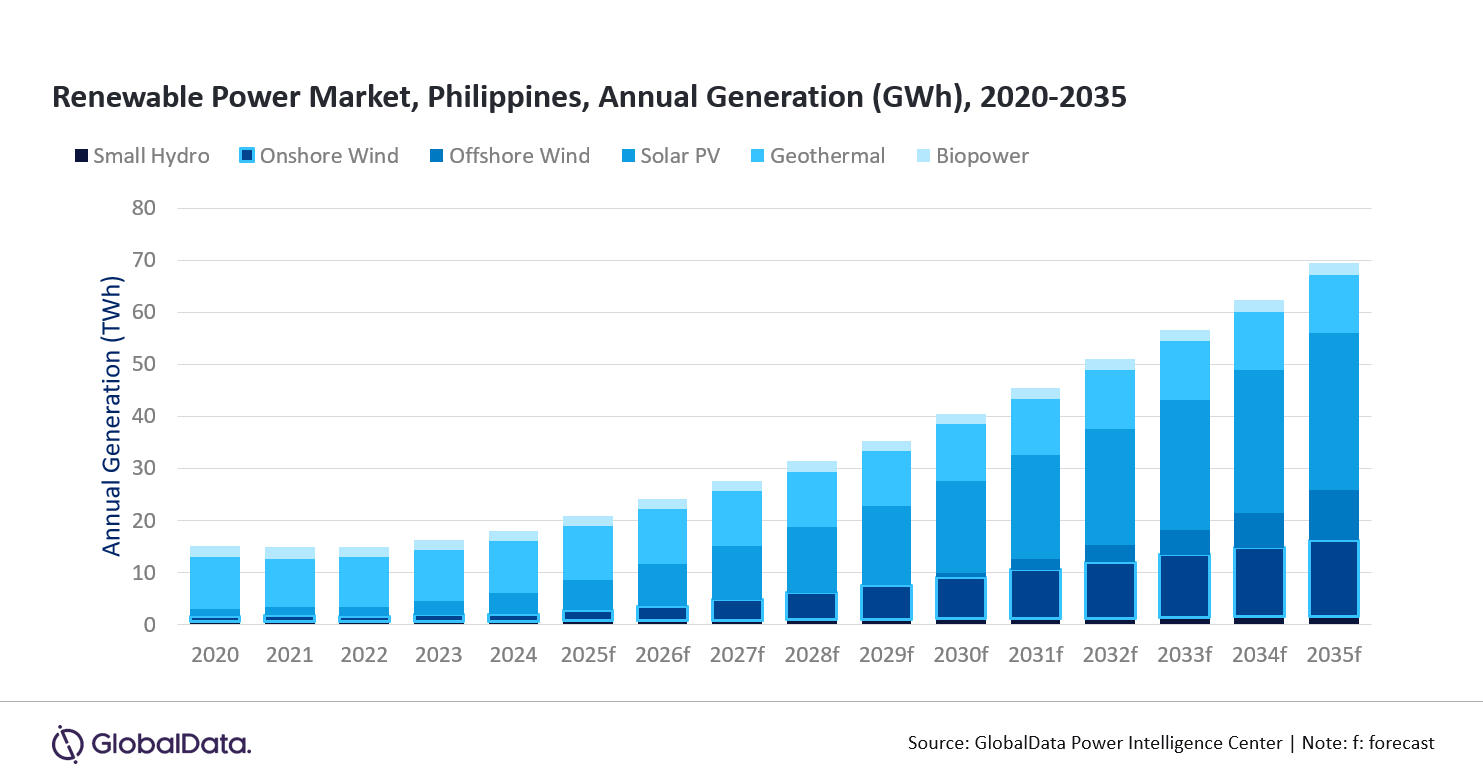The Philippines’ Department of Energy has established an ambitious objective of attaining 35% renewable energy generation by 2030. Furthermore, the country is on a path to install 15GW of clean energy by the same year. It has also set a target of achieving 50% renewable energy generation by 2040. Against this backdrop, annual electricity generation from renewables in the country is forecast to reach 69.4TWh in 2035, registering a compound annual growth rate of 13.1% during 2024-2035.
In 2024, thermal power dominated the country’s generation mix with 78%, followed by renewable power accounting for 15.6%. Large hydro and pumped storage accounted for the remaining 6.4% share. In 2035, thermal power is expected to continue to account for a 62.7% share, followed by renewables and large hydro and pumped storage accounting for 33% and 4.3%, respectively.
To realise its renewable capacities goals, the Philippines is focusing on a 75% increase in geothermal capacity, a 160% rise in hydropower capacity, an expansion of wind power to 2.3GW, and an improvement of biomass power by 0.3GW, all by 2040, using 2020 as the baseline year.
The Filipino government’s dedication to renewable energy is underscored by its strategic policies and collaborations designed to augment the proportion of renewables within the nation’s energy portfolio. In line with its renewable energy objectives, there have been several noteworthy developments. For example, a $15bn agreement with United Arab Emirates-based Masdar is concentrating on the advancement of solar and wind projects, as well as battery storage initiatives, with the aim of achieving 1GW of clean energy by 2030.
Between 2025 and 2030, a total of $26.2bn is expected to be invested in the country’s power sector, of which solar photovoltaic is expected to account for a share of 38.8%, followed by onshore wind accounting for a 19.4% share. Offshore wind power is expected to account for a 17% share.
The Philippines is witnessing a consistent rise in electricity demand, attributable to economic expansion, urban development, industrial growth, and the broadening of digital infrastructure. In response to this escalating need, the nation is executing a range of strategies, which include the development of infrastructure, diversification of energy sources, and the enactment of policy reforms.

US Tariffs are shifting - will you react or anticipate?
Don’t let policy changes catch you off guard. Stay proactive with real-time data and expert analysis.
By GlobalData





